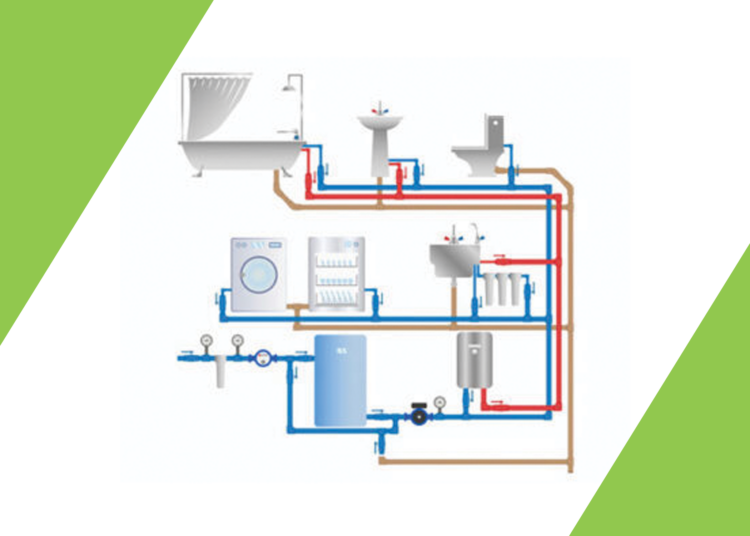Pump curve charts provide valuable information for understanding a pump. By examining the data and determining the operating point, you can troubleshoot and better understand the pump’s efficiency.
Reading a pump chart may be challenging. If you’ve never worked with one or encounter a unique situation, such as adding a pipe to a drainage system, deciphering the chart can be complex. A crucial factor to remember is that pump charts plot data based on the x and y axes.
By following the information below and comparing the two axes, you can identify performance data to get the most out of the pump.
Understanding the Basics
Once you’ve accessed the manufacturer’s pump chart, you’ll notice some key phrases that will assist you in understanding the chart. These phrases include:
- Capacity: This refers to the flow rate, or the total number of gallons that the unit can pump, measured per hour. The capacity will be the common denominator, plotted on the bottom line of the chart. Typically, it’s named “gallons per minute” (GPM).
- Head capacity: The head capacity is the pump’s power to raise fluid up, working against gravity or another resistance. It can be measured in meters or feet and plotted on the y-axis.
- Input power: The input power is the incoming horsepower delivered to the pump’s shaft, plotted on the y-axis.
- Pump efficiency: As with any efficiency measurement, this measures the rate at which the fluid is pumped compared to the incoming power. Pump efficiency is also found on the y-axis.
Getting Familiar With a Pump Curve Chart
The x and y axes are vital to navigating a pump curve chart. The x-axis is the horizontal line, and the y-axis is the vertical line. You will also see some other terms, such as:
- Operating point: You can determine the operating point when overlaying the system curve — your system’s unique requirements — onto the head capacity curve.
- System head curve: The system head curve measures the total resistance at the pump’s suction end at various flow rates. Also called the total dynamic head (TDH), it’s plotted on the y-axis.
You’ll also see kilowatt (kW), which refers to the pump motor input. The pump efficiency would usually be expressed as a percentage.
Tying the Information Together
As a whole, keep in mind that GPM (x-axis) is measured against resistance (head capacity), the input power that the pump gets, and the pump efficiency — all on the y-axis. For this reason, the flow rate — or capacity — is always the common denominator. By plotting and reading the pump this way, you can determine if the pump is suitable for your requirements.
Reading the Manufacture’s Pump Chart
The pump chart provides vital data regarding the pump’s performance at a particular point on the chart. Once you understand the chart, you can determine the optimal design point for the pump, the input power needed, and how efficiently the unit will work under those set conditions. To read the pump chart, do the following:
- Find the operating point: This is where the system head curve crosses over the head capacity curve on the chart.
- Move horizontally to the y-axis: Move your eye or finger horizontally to the left. Here, you’ll find the head capacity at which the pump will operate.
- Go back to the operating point: From this point, move back to the operating point as outlined in point one above.
- Move down vertically to the x-axis: Once you’re at the operating point again, move vertically down to the x-axis to the input power curve. This point will tell you the capacity at which the pump will operate with the impeller.
- Move horizontally to the right: Move to the y-axis to the right, where you’ll find the appropriate kW needed for the pump’s motor input.
- Move up vertically, staying on the right side of the y-axis: When you stay on this vertical line on the right, you’ll also see the pump’s efficiency in percentage.
- Know the optimal conditions for the pump: Once you’ve navigated your way through the chart, you’ll identify the design point. The design point is the amount of liquid the unit can pump while working against resistance.
The Value of Pump Curves
Once you can interpret pump curves, you can make important decisions when purchasing sump pumps, knowing:
- Optimal flow rates at specific pressures
- Efficient performance of the pump
- Suitability for your unique applications
Your Partner in Durable Pumps
Contractors can gain valuable insight from a manufacturer’s pump chart, enabling them to make the right decisions. Zoeller Pump Company is a leading pump manufacturer that supplies durable pumps to distributors and contractors. Our pumps are made in the United States using 95% domestic materials. We provide quality product support so contractors can confidently complete complex projects.
For more information about pumps and charts, get in touch with your local distributor today.




